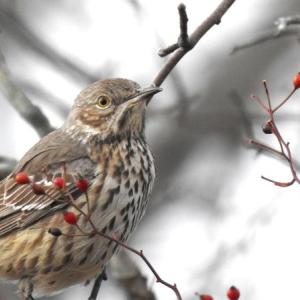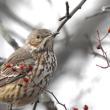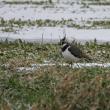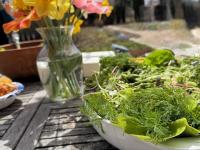Closing Out the Year with Three Rare Birds
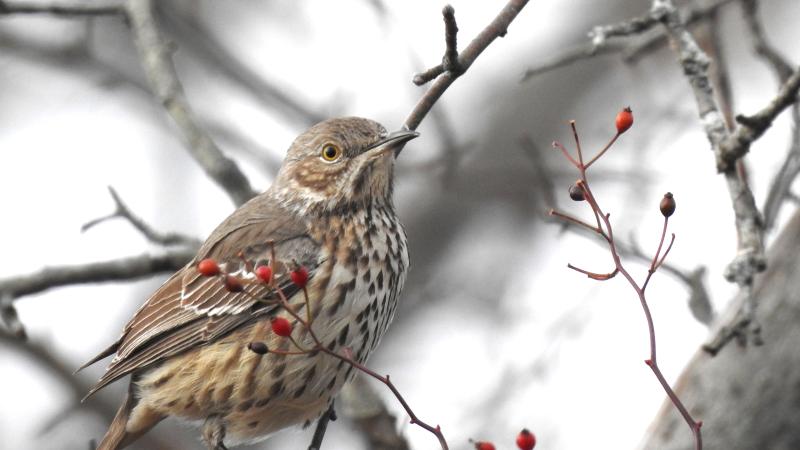 Most of the world's sage thrashers are spending the winter in the southwestern U.S. and northern Mexico, but this one has been delighting birders at Maine Audubon's Gilsland Farm Sanctuary since late December. Courtesy of Rob Spiers.
Most of the world's sage thrashers are spending the winter in the southwestern U.S. and northern Mexico, but this one has been delighting birders at Maine Audubon's Gilsland Farm Sanctuary since late December. Courtesy of Rob Spiers.
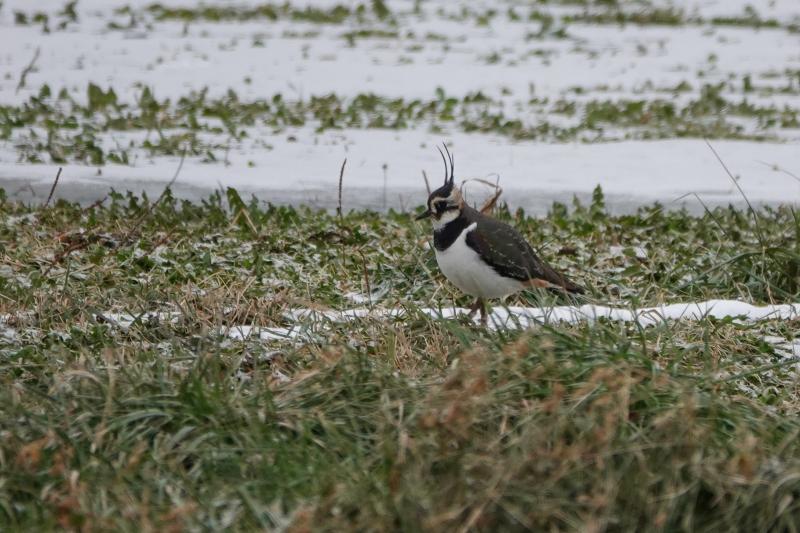 The tall crest of the northern lapwing makes it very distinctive and a treasure to see here in Maine (this one was photographed in Houlton) since they are a bird of Europe. Courtesy of Ashlee Duff.
The tall crest of the northern lapwing makes it very distinctive and a treasure to see here in Maine (this one was photographed in Houlton) since they are a bird of Europe. Courtesy of Ashlee Duff.
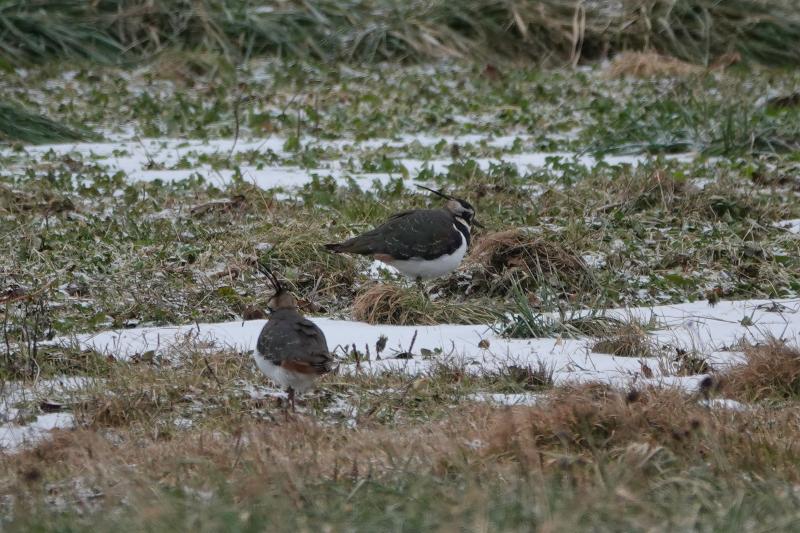 Northern Maine birders would have been excited to find a single northern lapwing but, amazingly, they found a flock of five of these European vagrants in early December in Houlton. Two can be seen together in this photo. Courtesy of Ashlee Duff.
Northern Maine birders would have been excited to find a single northern lapwing but, amazingly, they found a flock of five of these European vagrants in early December in Houlton. Two can be seen together in this photo. Courtesy of Ashlee Duff.
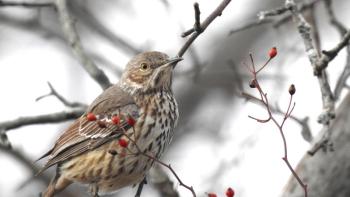 Most of the world's sage thrashers are spending the winter in the southwestern U.S. and northern Mexico, but this one has been delighting birders at Maine Audubon's Gilsland Farm Sanctuary since late December. Courtesy of Rob Spiers.
Most of the world's sage thrashers are spending the winter in the southwestern U.S. and northern Mexico, but this one has been delighting birders at Maine Audubon's Gilsland Farm Sanctuary since late December. Courtesy of Rob Spiers.
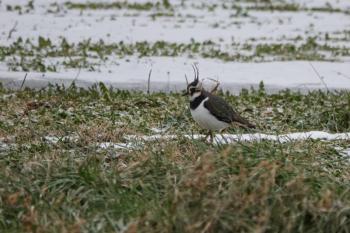 The tall crest of the northern lapwing makes it very distinctive and a treasure to see here in Maine (this one was photographed in Houlton) since they are a bird of Europe. Courtesy of Ashlee Duff.
The tall crest of the northern lapwing makes it very distinctive and a treasure to see here in Maine (this one was photographed in Houlton) since they are a bird of Europe. Courtesy of Ashlee Duff.
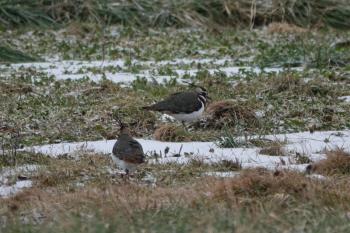 Northern Maine birders would have been excited to find a single northern lapwing but, amazingly, they found a flock of five of these European vagrants in early December in Houlton. Two can be seen together in this photo. Courtesy of Ashlee Duff.
Northern Maine birders would have been excited to find a single northern lapwing but, amazingly, they found a flock of five of these European vagrants in early December in Houlton. Two can be seen together in this photo. Courtesy of Ashlee Duff.
Some have called it the “mountain mockingbird” or the “mockingbird of the sagebrush” but its official name is the sage thrasher. If you’ve never heard of it, don’t feel bad. It’s not a bird we would ever consider to be a “Maine bird” as its breeding range is confined to sagebrush habitats of the arid American west. Western South Dakota is about as close to Maine as it gets in summer. In the winter, it’s found from southern California across to Texas and south to northern Mexico.
Although it’s not a Maine bird in any normal sense, a sage thrasher is on the list of birds that have been documented in Maine. In 2001, one hung around from mid-November through December at Cape Neddick and was photographed and enjoyed by many birders.
Now, 21 years later, a second individual has appeared. This time at Maine Audubon’s Gilsland Farm Sanctuary where it has been readily accessible and generally quite easy to see since it was first discovered on December 22.
According to eBird, this is the only sage thrasher currently west of Austin or San Antonio, Texas, but the species has a history of appearing (usually in the fall) in scattered locations across eastern North America.
It does look very much like a small mockingbird but with a streaked breast. The one at Gilsland Farm hops around on the ground at times, looking a bit thrush-like—coincidentally, it has been seen near a wintering hermit thrush there, regularly feeding on multiflora rose hips.
Interestingly, this is a species that is apparently not well studied. So while it is a mysterious wanderer to us here in Maine, many mysteries about its normal movements and winter ecology remain.
Another western visitor, a Townsend’s solitaire, was also found in southern Maine in December. The solitaire was discovered at the Wells Reserve at Laudholm in Wells. In an odd twist, the first specimen obtained of a sage thrasher for western science was collected by a man named John Kirk Townsend in Wyoming in 1834. The same man collected, in Oregon in 1835, what turned out to be a new species for ornithology that John James Audubon named Townsend’s solitaire in his honor.
Mr. Townsend had nothing to do with naming of another species of rarity that appeared in Maine in December, the northern lapwing. This species was well known to early European ornithologists as it is a bird of Europe and Asia. The closest thing we have regularly to a northern lapwing is a killdeer. Both are in the plover family, and both are often found in farm fields and pastures. The lapwing is taller with a fancy crest.
In recent years, more lapwings have been appearing in eastern North America including here in Maine. Rather shocking, though, was the discovery of five northern lapwings together in Houlton in early December. This was apparently part of some kind of movement of the species that was connected to the very cold weather that Europe was experiencing in early winter. Single lapwings were found in Thomaston and Arundel in December as well, and another over Plum Island in Massachusetts. A number of lapwings were also found on Iceland in late November and on the Azores in November and December. A single one was seen on Antigua in the Caribbean in December. Perhaps these are all part of the same movement that brought the flock of five to Maine.
The best thing about closing out 2022 with these three rare birds is that they are still here in Maine, which means you can start the new year by going to see them!
Jeffrey V. Wells, Ph.D., is a Fellow of the Cornell Lab of Ornithology and Vice President of Boreal Conservation for National Audubon. Dr. Wells is one of the nation's leading bird experts and conservation biologists and author of the “Birder’s Conservation Handbook.” His grandfather, the late John Chase, was a columnist for the Boothbay Register for many years. Allison Childs Wells, formerly of the Cornell Lab of Ornithology, is a senior director at the Natural Resources Council of Maine, a nonprofit membership organization working statewide to protect the nature of Maine. Both are widely published natural history writers and are the authors of the popular books, “Maine’s Favorite Birds” (Tilbury House) and “Birds of Aruba, Bonaire, and Curaçao: A Site and Field Guide,” (Cornell University Press).

